READY TO GET STARTED?
REQUEST A FREE ESTIMATE
Fill out the form below or call (888) 466-7849 for a free, no-obligation estimate.
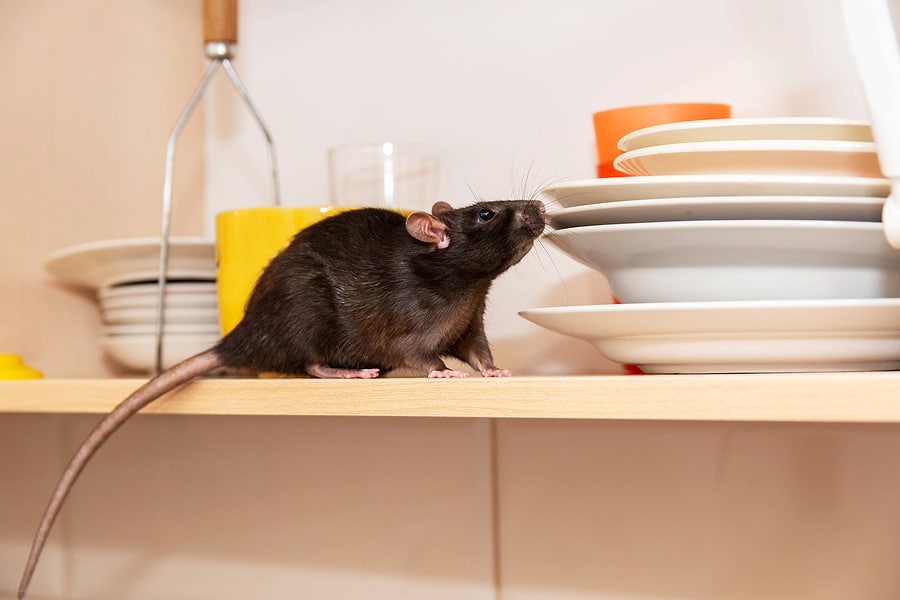
As members of the rodent family, mice and rats look very similar and are often mistaken for one another. Both are harmful, transmitting serious diseases to humans and pets, contaminating surfaces in our home, and chewing through structures and wires, causing damage and putting you at risk for fires. How do you know if you are dealing with a mouse vs rat? Here are 5 key differences between these two rodents.
Mice are noticeably smaller than rats, growing 3 to 4 inches in length. Mice weigh anywhere from 0.5 oz to 3 oz. A mouse’s tail is equal in length to its body and is thin, long, and covered in hair. Mice have small heads and large ears with pointy, triangular snots and smooth fur. Mice can be white, gray, or brown in color. Rats, on the other hand, are much larger, measuring 9″ to 11″ in length and weighing anywhere from 12 oz to 1.5 lbs. A rat’s tail can be 7″ to 9″ in length and is long, thick, scaly, and hairless. Rats have small ears and large heads with blunt snouts. They have coarse fur that can be dark brown or multicolored.
Mice have smaller droppings, about 1/4″ in length. Mice droppings are black with pointed ends and resemble a grain of rice. Mice can leave up to 100 droppings at a time. Rat droppings are larger with an elongated oval shape. These droppings are about 3/4″ long, black in color, and resemble a banana. Rats can leave up to 50 droppings at a time. Rodent droppings of both species are known to carry diseases that can be harmful to humans.
While both species are omnivores, their diets tend to vary. Mice commonly eat fruit, seeds, and plants. In your home they may nibble on bread crumbs or other cereals and grains. Their palates are not as wide as rats. Mice can also survive on 3 mL of water per day. Rats, on the other hand, will eat almost anything, even scavenging through your garbage for fruit, eggs, meat, and other leftovers. They will also eat plants and seeds. Rats need anywhere from 15 to 60 mL of water per day.
While both rats and mice will come into your home, they tend to frequent different areas once inside. Mice can be found in garages, under trees, under decks, and in walls and other voids that are too small for other rodents to get into. The species of rat you are dealing with determines where they prefer to live. Norway rats can be found in sewers, inside walls, and in cellars. They prefer lower levels of your home to reside in. Roof rats prefer higher environments, often being found in cabinets and attics.
Mice are nocturnal animals. They are timid but social within their own populations. They are very territorial and more curious than rats, making them easier to trap. They are skillful climbers and can access areas rats can’t because of their small size. Rats are also nocturnal but are more cautious and fearful of new things than mice are, making them more difficult to trap. Rats are also skillful climbers. Both rats and mice will gnaw through structures and wiring in your home, causing damage and putting you at risk for fire. Mice have weaker teeth and can’t chew through glass or metal to get to food. Rats have much stronger jaws and have been known to chew through wood, glass, sheet metal, aluminum, and even cinder blocks.
Regardless of which pest you are dealing with, proper identification and treatment is essential to eliminating them. Contact your local pest control company who can determine which type of pest you have and set you up with the appropriate rodent control plan to eliminate them.
Cockroaches: Types and Prevention Tips
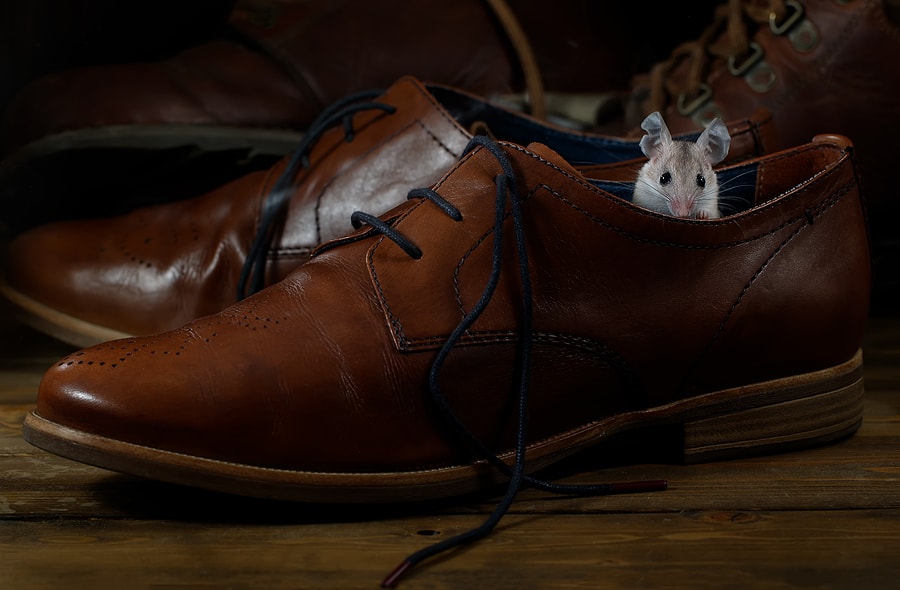
Mice are incredibly resourceful as they can quickly adapt to new environments. Small in size, these pests are looking for a warm place to shelter and provide a food source. If these rodents make it indoors, they can cause significant damage to your home. Here we list the major signs of mice in your home and how you can prevent them.
Seeing holes, tears, and gnaw marks is a major sign that mice are indoors. You can typically see this damage in bedding, clothing, fabrics, and other materials. Mice will use these shredded fabrics to help build their nests, usually located in dark, secluded areas. These pests will also chew and leave gnaw marks on inedible materials such as wood, plastic, cables, and electrical wiring.
A more obvious sign of a mouse infestation is hearing noises throughout the night. Mice can fit through holes and openings smaller than their bodies. Using their ability to fit through the smallest hole, they will often use the spaces between joists to travel from one part of the house to the other. If a mouse has gotten inside the walls, you’ll often hear scratching or scrabbling noises.
Another alarming sign that a mouse is inside is seeing their feces. Mouse droppings are around three to six millimeters or ¼ inch in length. They typically resemble small grains of rice and sometimes can be mistaken for cockroach droppings. If you see mouse droppings, it’s best to carefully pick them up with gloves and place them in a sealed plastic bag to ensure they don’t release bacteria or virus particles.
To help prevent mice, place the preventative measures below throughout your house.
If you notice any signs of mice inside your house, consider reaching out to your local pest control provider, where they will provide you with the best plan of action.
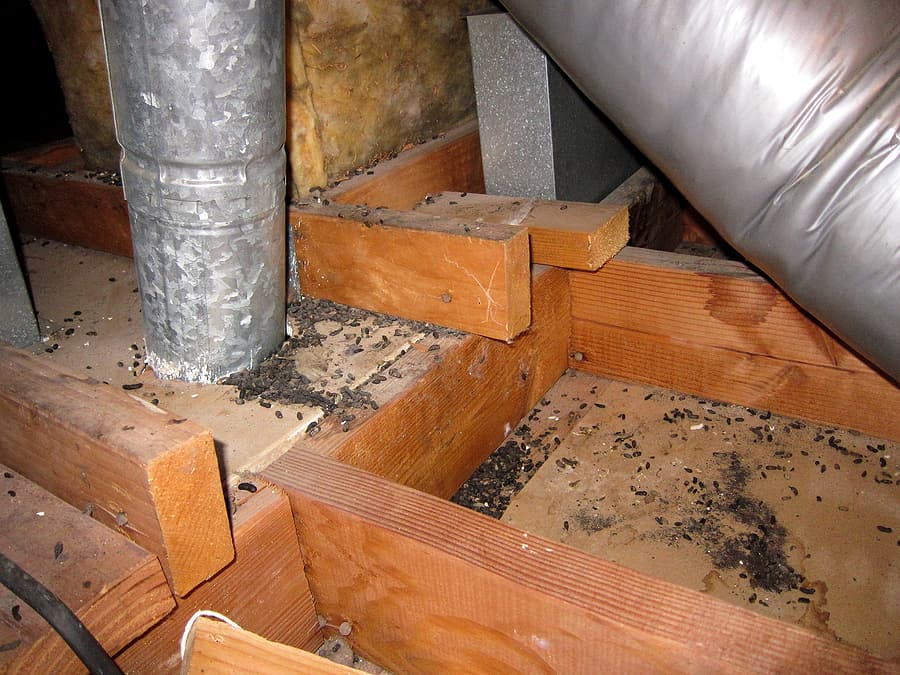
Rodents can wreak havoc on your home, chewing through wires and insulation and contaminating surfaces with their urine and feces. Rodents are also known for carrying and transmitting serious diseases to humans. You may not see a live rodent in your home until an infestation is already established. It is important to know the signs of a rodent infestation so you can identify the problem before it gets out of control. Here are 9 warning signs of a rodent infestation to look for in your home.
Prevention is critical to keeping rodents and other pests from taking over your home. Keep them out of your home with these rodent prevention tips:
If you suspect you have a problem with rodents or any other pest, your local pest control company can perform a thorough home inspection which will help determine the type of rodent you are dealing with, their patterns of activity, what’s attracting them to your home, and which treatment method is best for elimination and ongoing prevention.
What Is The Most Effective Termite Treatment?
5 Pests That Can Destroy Your Lawn
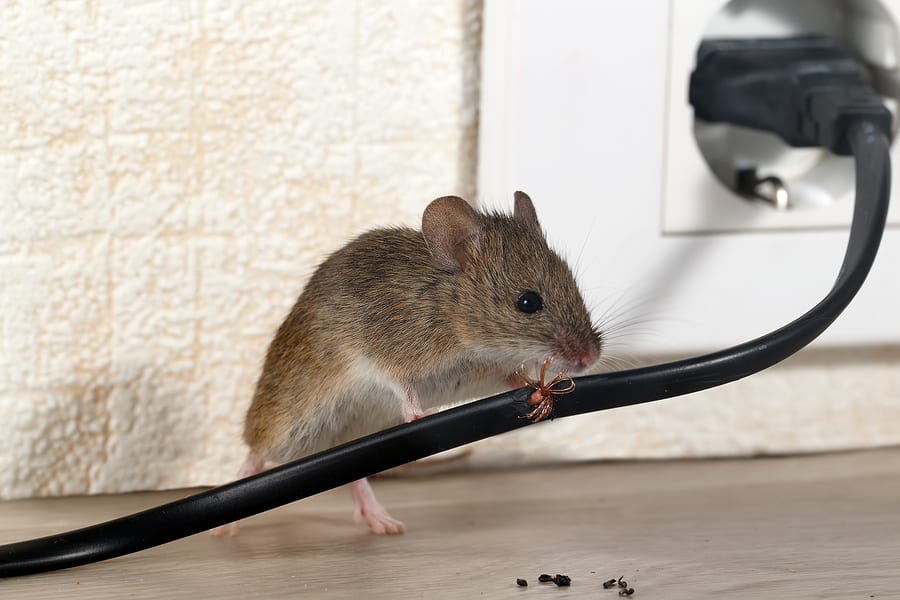
While rodents will typically infest your home during the colder months of the year, it is still possible for these pests to be found inside the home during the warmer months too. If a rodent, like a mouse or rat, is found inside a house during spring and summer months, it’s likely that they’ve been there since winter! Rodents can cause expensive damage to your property. Learning some common signs of rodents in your home is the first step in identifying an infestation and establishing a rodent control plan.
One of the most common and telling signs that a rodent is in your home is finding their droppings. Measuring around 1/8 to ¼” long, droppings are left behind in places where food is stored, such as the kitchen and pantries. Rodent feces can be dangerous as it can carry harmful bacteria and transmit dangerous diseases such as salmonella. When looking for these droppings, make sure to check under the sink, in pantries, in cabinets, along baseboards, and on top of wall beams.
Mice and rats are always in search of food and water and will often chew their way to it. Both rodents can cause serious damage by chewing through materials found throughout the house, such as plastic and lead pipes. House mice and Norway rats are known to gnaw on wires that are behind walls, causing the dangerous risk of a fire. Check throughout the house for any suspicious chewing marks on wires, pipes, or even plastic containers as these can be an indication that a rodent is inside your home.
Hearing strange noises at night is always concerning, but it’s also a common indicator that rodents have made their way inside. These pests are typically active during the night and, if inside, hearing them scurry around the house is common. Rodents usually prefer dark, secluded spots to build their nests, such as in attics or in between walls. Checking these areas could give you the answer on whether rodents have been infesting!
If you suspect a rodent infestation in your house, contact your local pest control company who can safely remove them from your home.
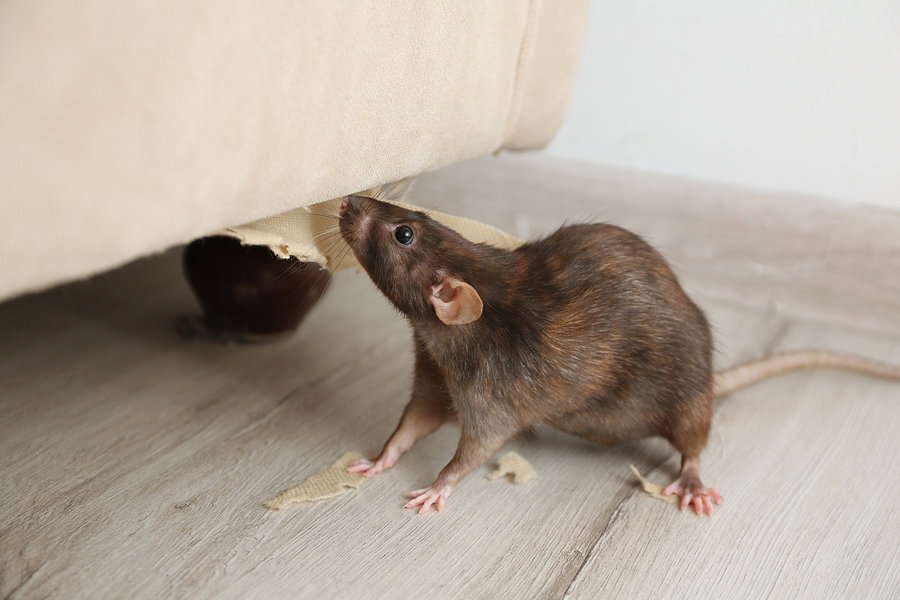
You’ve found all the signs and you’ve confirmed it – there’s a rodent in your house. But is it a rat or a mouse? Does it really matter? How can you tell? Although there are significant differences in rat vs mouse, it can be hard for the average homeowner to distinguish between the two. The behavior, diet, and habitat of each of these pests affects how they are eliminated and prevented. Proper identification is essential for effective rodent control.
There are over 70 species of mice and rats in the United States. The most common are the Norway rat, the roof rat, and the house mouse. Let’s take a look at the difference between rats and mice and why it matters.
Mice are curious and will investigate anything new they come across. Because of this, you can put set mouse traps directly in their path. Mice can stand on their hind legs when they are supported by their tails. They are excellent jumpers, swimmers and climbers and are extremely fast runners. Mice are nocturnal and most active from dusk until dawn. They do not like bright lights.
Rats are more cautious than mice. They will avoid new things until they get used to them being there. Because of this, unset traps should be placed in their path first to let them get used to them and then replaced with set traps later. Rats are strong swimmers and will often live in sewers, allowing them to enter buildings through broken drains and toilets. They will climb to get to food, water, and shelter. They follow regular routines and paths each day.
House mice are much smaller than their rat cousins. They have small heads, small feet, pointed snouts, and large ears with some hair on them. They are usually light brown in color with some gray shading and dark tails. Their droppings are shaped like small rods.
Norway rats have heavy, thick bodies. They are the largest of the three common rodent species. They have blunt snouts and short ears with dark hair. They are usually brown with black shading and shaggy coats. Their tails are dark on top and pale underneath. Their droppings are shaped like capsules.
Roof rats have light slender bodies. They have pointed snouts and long ears with no hair. They are usually gray in color with black shading and smooth coats. Their tails are dark. They have droppings shaped like spindles.
Mice prefer cereal grains and plants but they will feed on almost anything.
Rats will eat nearly anything, as well, but prefer fresh grain and meat. Rats also need 1/2 to 1 ounce of water a day to survive.
Mice prefer to nest near their food sources. They will use any soft material or shredded paper to build their nests.
Rats will burrow under buildings, along fences, and under plants or debris. Norway rats typically live in these burrows while roof rats prefer to nest in walls, attics, and trees.
Mice will have up to 10 litters per year and typically live from about 9 to 12 months.
Norway rats will have up to 6 litters per year and live 12 to 18 months.
Roof rats will have up to 8 litters per year but have fewer babies in their litters than Norway rats do.
The house mouse is considered one of the top 100 world’s worst invaders. They are afraid of rats because rats will eat them. Mice are also color blind.
Rats are nocturnal and have poor eyesight. Norway rats and roof rats do not get along and will actually fight each other to the death. Norway rats tend to live on the lower floors of buildings while roof rats will live on the upper floors.
Why does it matter whether you have a rat or a mouse? Both rat and mice droppings contain pathogens that are dangerous to humans. Both are also very good at breeding and increase their populations quickly, making them harder to control. The significance in properly identifying rats vs mice affects how they are controlled and eliminated. Because they each have such different diets, habitats, and behaviors, different methods are employed when it comes to getting rid of them. What may work for house mice might not be effective in controlling rats and vice versa.
If you have an issue with rodents or any other pests, contact a professional pest control company who can not only properly identify the nuisance pest, but also set you up with the appropriate treatment and ongoing prevention plans.
What Attracts Moles to Your Yard?